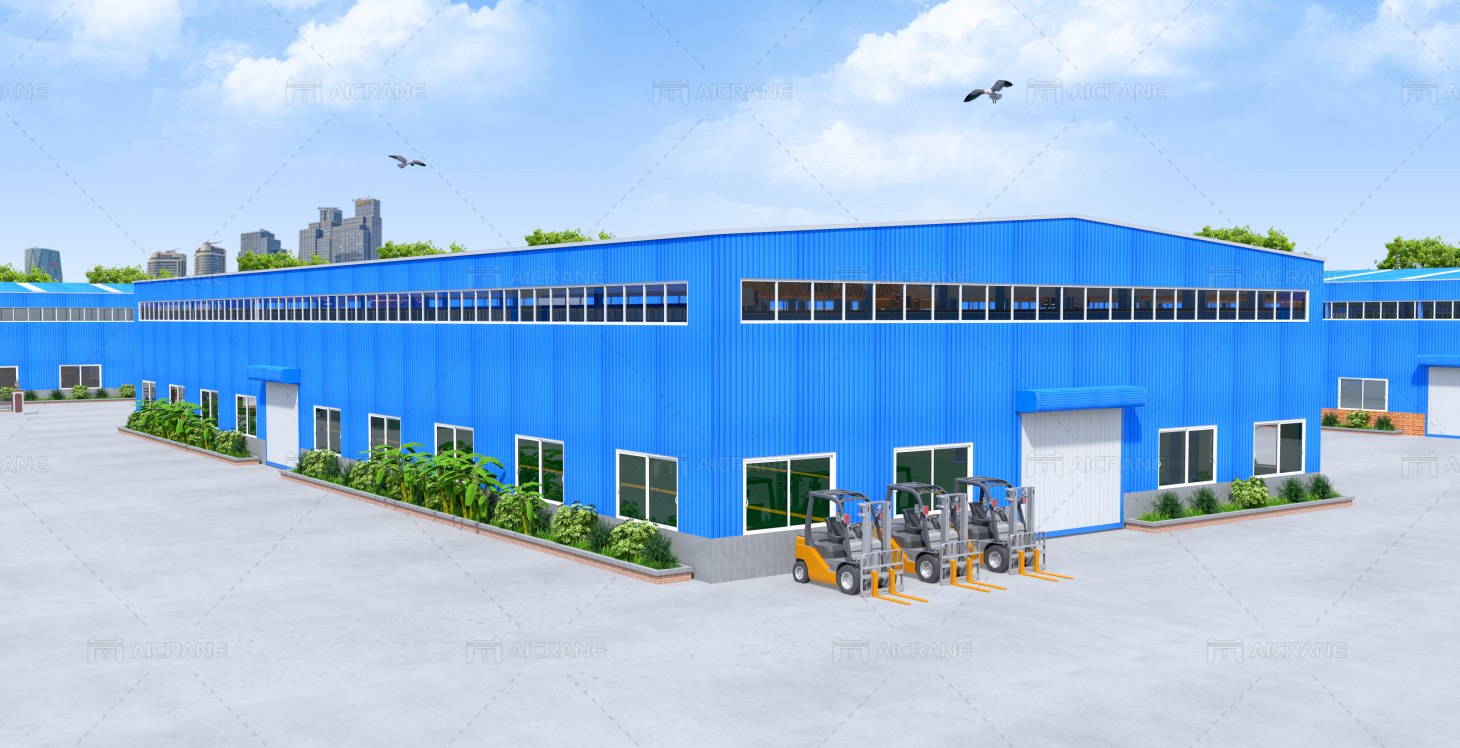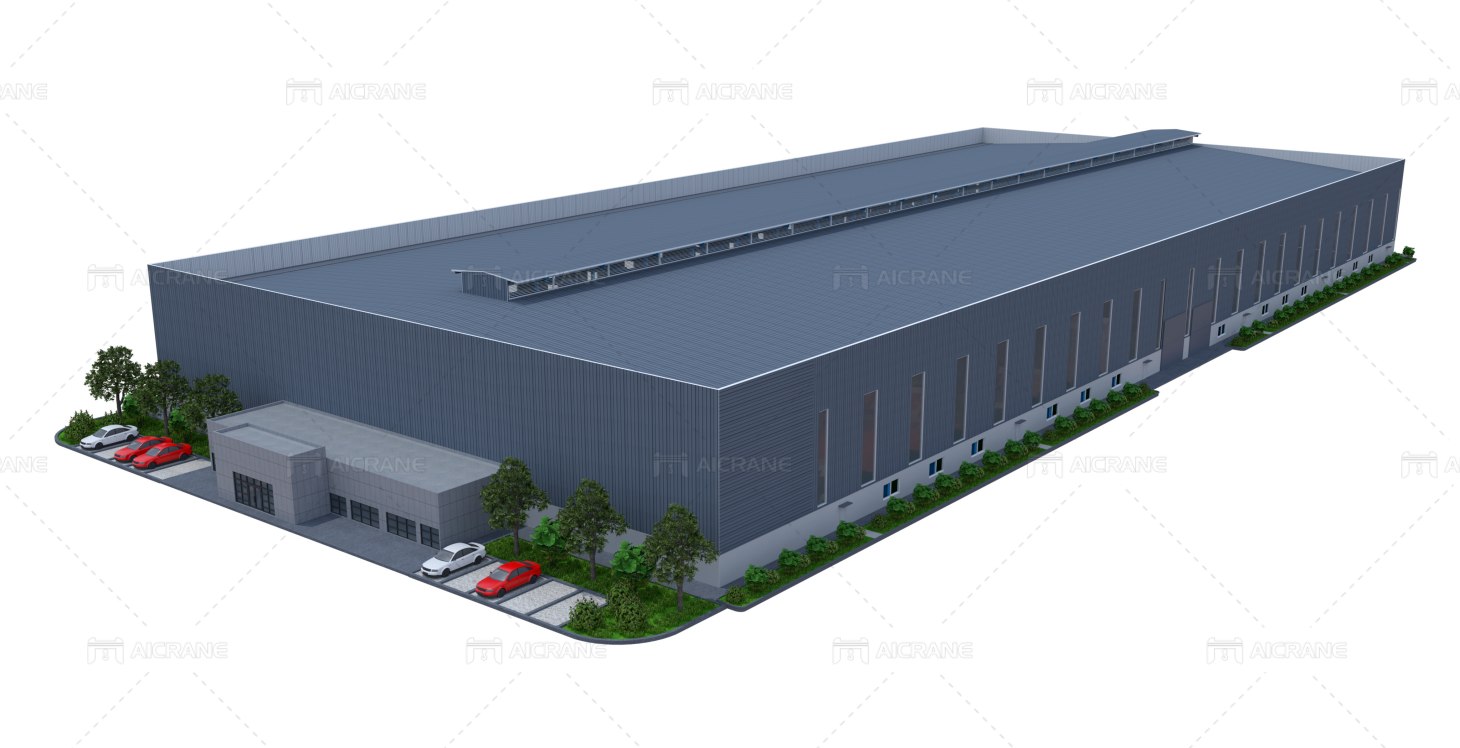Prefabricated steel structure warehouses are increasingly popular due to their cost efficiency, speed of construction, and adaptability. However, like any construction and operational process, they come with their own set of risks. Effective risk management is essential to ensure these warehouses are safe, compliant, and durable. This article will explore comprehensive risk management strategies tailored for prefabricated steel structure warehouses, covering design, construction, and operational phases.

Risk Identification
The first step in risk management is identifying potential risks throughout the lifecycle of the steel structure warehouse. These risks can be broadly categorized into design risks, construction risks, and operational risks.
- Design Risks: These include structural failures, design flaws, and inadequate specifications that do not meet local building codes or operational requirements.
- Construction Risks: These encompass site preparation issues, delays, cost overruns, accidents, and quality control problems.
- Operational Risks: These involve maintenance challenges, fire hazards, environmental impacts, and the potential for structural degradation over time.
Risk Assessment
Once risks are identified, they need to be assessed in terms of their likelihood and potential impact. This assessment helps prioritize which risks need immediate attention and which can be monitored over time. A risk matrix is a useful tool for this purpose, mapping out the probability and impact of each risk.
Risk Mitigation Strategies
Design Phase
Compliance with Standards and Regulations: Ensuring that the steel structure design adheres to all relevant local, national, and international building codes and standards is crucial. Regular consultations with regulatory bodies can prevent non-compliance issues.
Structural Integrity and Load Analysis: Advanced structural analysis using software tools can help predict how the building will behave under different loads and stress conditions. This includes considering factors such as wind loads, snow loads, seismic activity, and potential dynamic loads from machinery or storage systems.
Redundancy and Safety Margins: Incorporating redundancy and safety margins in the design can help mitigate the risk of structural failure. This involves designing components that can handle more than the expected load to account for unforeseen circumstances.

Construction Phase
Site Preparation and Assessment: Thorough site assessment and preparation are essential to identify potential hazards such as soil instability, flooding, or environmental contamination. Proper grading, drainage systems, and foundation work can mitigate these risks.
Quality Control and Assurance: Implementing strict quality control measures during construction ensures that all components meet the required specifications and standards. Regular inspections and testing can catch issues early before they become significant problems.
Safety Protocols and Training: Ensuring that all workers are trained in safety protocols and that construction sites adhere to Occupational Safety and Health Administration (OSHA) standards can reduce the risk of accidents and injuries. Providing proper personal protective equipment (PPE) and conducting regular safety drills are also critical.
Supply Chain Management: Managing the supply chain effectively to avoid delays and ensure that materials and prefabricated components are delivered on time and within budget. Establishing relationships with reliable suppliers and having contingency plans for disruptions can mitigate supply chain risks. If you would like to know more about steel structure buildings and would like to get a stable and durable solution, you can search and check Aicrane steel structure for your reference while you are making a choice.
Operational Phase
Regular Maintenance and Inspections: Implementing a routine maintenance schedule ensures that the steel structure warehouse remains in good condition. Regular inspections can identify and address issues such as corrosion, fatigue, and wear and tear before they become significant problems.
Fire Safety and Prevention: Installing fire detection and suppression systems, creating clear evacuation plans, and conducting regular fire drills are essential for mitigating fire risks. Ensuring that the steel structure warehouse design includes fire-resistant materials and compartmentalization can also help contain and prevent the spread of fires.
Environmental and Sustainability Practices: Managing environmental risks involves adhering to environmental regulations, implementing sustainable practices, and conducting regular environmental impact assessments. This includes proper waste management, minimizing emissions, and using energy-efficient systems.
Emergency Preparedness and Response Plans: Developing comprehensive emergency response plans for various scenarios such as natural disasters, accidents, and security breaches ensures that all personnel know how to respond in an emergency. Regular training and drills can enhance preparedness.
Insurance and Financial Risk Management: Securing appropriate insurance coverage for construction and operational phases can mitigate financial risks. This includes general liability insurance, builder’s risk insurance, and property insurance. Regularly reviewing and updating insurance policies ensures adequate coverage. The warehouse steel structure can adopt single span or long span steel structure design and construction style according to different needs.
Technological Integration
Leveraging technology can significantly enhance risk management efforts. The integration of Building Information Modeling (BIM) allows for detailed visualization and analysis of the structure throughout its lifecycle, aiding in identifying potential risks early. Additionally, the use of IoT (Internet of Things) sensors can provide real-time monitoring of structural health, environmental conditions, and security, allowing for proactive maintenance and risk mitigation.
Stakeholder Involvement
Engaging all stakeholders, including designers, engineers, contractors, and operators, in the risk management process ensures that all perspectives are considered and that there is a shared understanding of the risks and mitigation strategies. Regular communication and collaboration can help address issues promptly and effectively.
Continuous Improvement
Risk management is an ongoing process that requires continuous improvement. Regularly reviewing and updating risk management strategies based on lessons learned, new technologies, and evolving regulations ensures that the prefabricated steel structure warehouse remains safe, compliant, and efficient. Conducting post-project evaluations and gathering feedback from all stakeholders can provide valuable insights for future projects.
Effective risk management for prefabricated steel structure warehouses requires a comprehensive approach that spans the entire lifecycle of the facility. By identifying, assessing, and mitigating risks during the design, construction, and operational phases, organizations can ensure the safety, durability, and efficiency of their warehouses. Integrating advanced technologies, engaging stakeholders, and committing to continuous improvement are key strategies for successful risk management in this dynamic and essential sector.